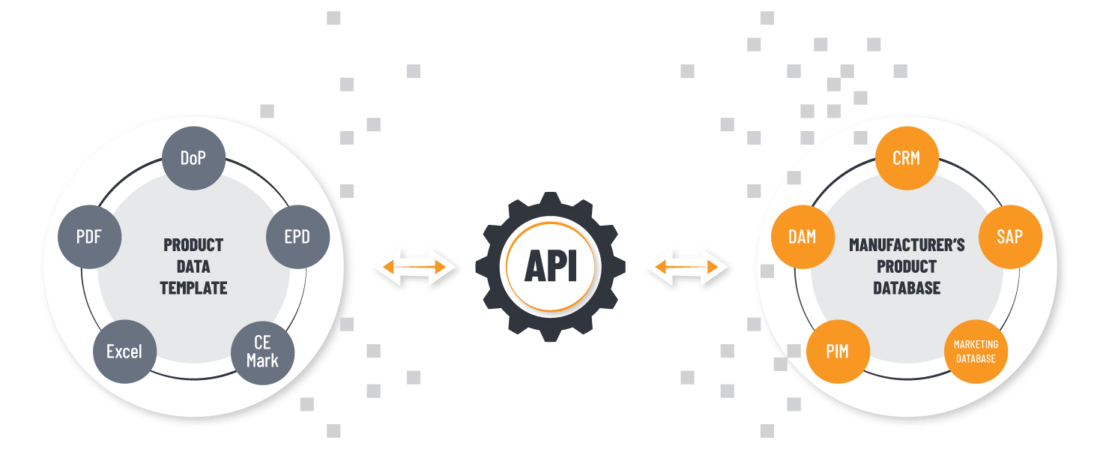
Today’s world is powered by APIs
Today’s world runs on application programming interfaces (APIs). They make it possible to receive data and consume services through web applications, mobile applications, and network-connected devices. More and more interactions on the Internet are done through APIs. Thanks to APIs, new business models are emerging, and the internet has become a universal business platform.
APIs have no industrial attachment, companies from different spheres of economy see value in their use for their business. In turn, the market for API management software is growing rapidly, as evidenced by reports from Gartner and Forrester.
Just a few years ago, interaction between different departments of the same business was usually through an integration bus. But the model of interaction through the API portal – the portal where APIs are published – turned out to be so convenient that it is now used within companies as well.
So how is it that even when choosing a model of interaction between departments, companies are now leaning towards API-based solutions? What is the essence of the current technological model and what are the new rules of the game?
Open APIs – fashion or necessity?
The use of open APIs is not just a fashion or a trend – it is a response to the market requirements. Banks, telecommunication companies and insurance organizations already publish their services for external use, for integration with partners and for automating financial flows. The day seems not far off when they will be joined by providers of entertainment, operating services and physical goods.
In Europe, interest in financial flow innovation has been sparked by the European Parliament’s PSD2 payment directive, issued to create a more level, transparent and open payments market that promotes innovation, competition and security. In Russia, the development of open APIs has been officially recognized as a key element necessary for the effective integration of financial market participants’ systems.
The Russian government and its financial sector have already recognized the need for open banking. The provision of banking APIs to external organizations is recognized as a key element, necessary for the effective integration of financial market participants’ systems. The Central Bank, Banki.ru portal, Moscow Exchange, National Clearing Center and National Settlement Depository support open API production initiatives. Some banks have already formulated their open banking strategy, decided on a model for further action, officially announced access to their systems and services via open APIs, and started the corresponding work.
List of APIs on the webMethods API portal
Domestic mobile operators are also offering new platforms with APIs to develop their partners’ businesses. This will allow telecoms providers to support their partners by bundling their offerings and expanding their market for them.
Russian banks and telecom providers are the first to recognize themselves as software developers and the marketplace as a large digital platform to manage products, customize marketing campaigns, and interact with potential customers. Product teams, customers, companies, and clients understand that the more open they are, the more open their products will be, and the faster they will integrate into the overall ecosystem of the markets in which they operate. That’s why they use open APIs – a smart and efficient way for developers to interact and dramatically reduce the time to market for new products.
In addition, open APIs are presented to their partners by software developers such as Yandex. Russian Post also offers integration with external applications via APIs, which allows to embed Russian Post services into third-party sites, applications, accounting and document management systems – for example, to add tracking features to sites.
And, of course, creating products with open APIs is natural for software developers like Software AG. The more completely their products are documented and the better they are managed, the more users they will have.
But the management of open APIs is not up to anyone. It is not possible without a proper technology stack.
Who develops API platforms and how they work
According to Gartner’s aforementioned “magic quadrant,” the market leaders in full lifecycle API management systems are Google, CA Technologies, IBM, Software AG, MuleSoft, Red Hat and TIBCO Software. Forrester, in a recent study, names IBM, Google, Software AG, Rogue Wave Software and WSO2 as leaders.
According to the Forrester report, “APIs are a key foundation for digital transformation. They help optimize the customer experience, create integrated digital ecosystems of customers and partners, enable companies to capitalize on breakthrough digital innovations, improve operational efficiency and lay the foundation for platform-based business models… API management solutions are central to managing the relationship between API vendors and users, developers and application providers must view them as business applications that are critical to digital business success.”

API administration interface
“Without providing full API lifecycle management, you cannot build a platform for digital strategy, build an ecosystem and launch effective products,” Gartner adds in its report.
So what do full API lifecycle management systems provide? Typically, the API lifecycle management technology stack includes tools to publish APIs to an easy-to-read portal with third-party developers as the primary user, an environment for operation, consumption, maintenance, API version management, and decommissioning tools. Some developers (Software AG among them) also provide tools for planning, designing, implementing and testing APIs.
We at Software AG used to do API management when it was still called “back-end interoperability”. We were extending and improving connectivity software, application integration solutions, enterprise service bus systems, and tools for building systems based on a service-oriented architecture.
In 2004, in addition to our integration bus, we created B2B Trading Networks, a product for inter-partner communication and data exchange. It implemented all the classic custom scenarios of inter-partner cooperation, including continuous monitoring, service, and exchange of transaction day results data. Back then, it wasn’t yet called open APIs.
Finally, five years ago we introduced the full API management lifecycle as part of the webMethods API management platform. In 2014 we launched the webMethods API Portal for API developers, and in 2016 we combined the functionality of the webMethods API Gateway, portal, and mediation and lifecycle management tools into one platform. These tools support API development, building, approval and publishing to an accepted technology standard and are part of the Software AG Hybrid Integration & API platform.
How to choose an API platform
Forrester believes that when selecting an API management solution, the first thing to consider is whether the proposed solution is comprehensive – that is, contains an API developer portal, an API management portal, and an API gateway. It is specifically noted that some solutions provide additional components such as API design and development tools, integration platforms, real-time service management platforms, etc.
Forrester further emphasizes that the API management solution should be a true standalone product, separate from any related platforms, integration products or business applications.
Finally, the report’s authors believe it’s worth trusting those solution developers who have a number of full-fledged implementations. Customers of Software AG solution for API management are Michael Kors (manufacturer and supplier of high-end clothing and accessories), American Electric Power (one of the largest North American energy companies), Outerwall (provider of automated kiosks for retail sales), Dick’s Sporting Goods (sporting goods retailer), EDF (the largest French public power generating company and the world’s largest nuclear power plant operator) and others.
To this list of parameters it is worth adding several other factors that should be taken into account when choosing an API platform.
- The economy works differently in different industries and has different monetization schemes. Evaluate the development plan for the API platform you are considering. Does it reflect the realities of your business segment? It is important to define the business problem of implementation, form a list of business requirements for the solution and from it derive a list of functional and architectural requirements. Perhaps this list will determine the choice of not only the API solution, but also additional components.
- it is very important that your API platform meets the expectations of your customers, or more precisely, their IT departments. The platform should be easy to implement and operate, it should support a customer-friendly technology deployment model (cloud, physical, or hybrid), its functionality should meet their current needs, and its development plan should meet their future needs for a year or two ahead.
- The API portal must have extensive analytics capabilities, test interfaces for developers, and the ability to generate documentation based on API metadata. It should provide social collaboration for developers, generation of client SDKs, and monetization tools.
- The API gateway must provide security (authentication, authorization, security policy management, attack protection), service mediation, routing and load balancing capabilities.
- API lifecycle management tools must provide and assess the interconnectivity of internal and external services, microservices and regular services, technical and business services, and support for different types of “assets” in the catalog.
- A very important issue is the total cost of ownership of the solutions, which depends on the speed of product development and time to market – and this is affected by both the practices adopted by developers and the technologies they use.
- The question, to which API-platforms developers often don’t have an answer, is how the contract between the customer and the partner will be created and how the billing will work – most likely the vendor has recommendations on the realization of the technological possibility of creating a contract.





